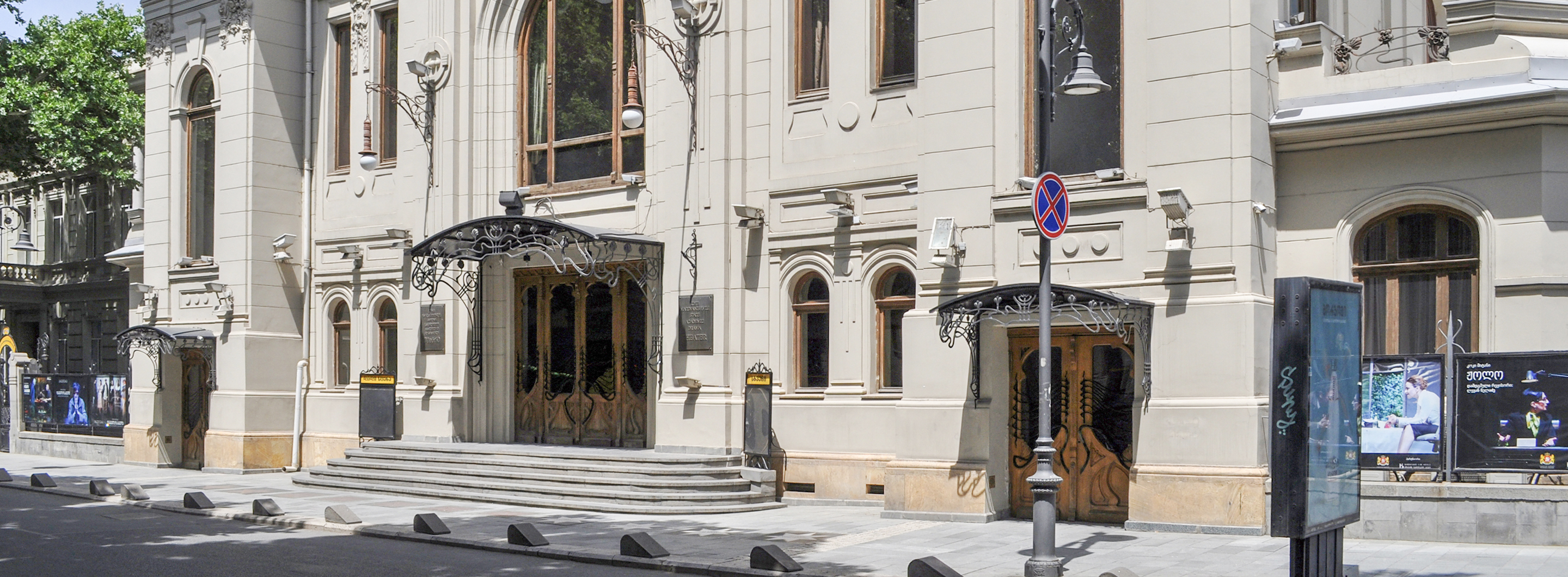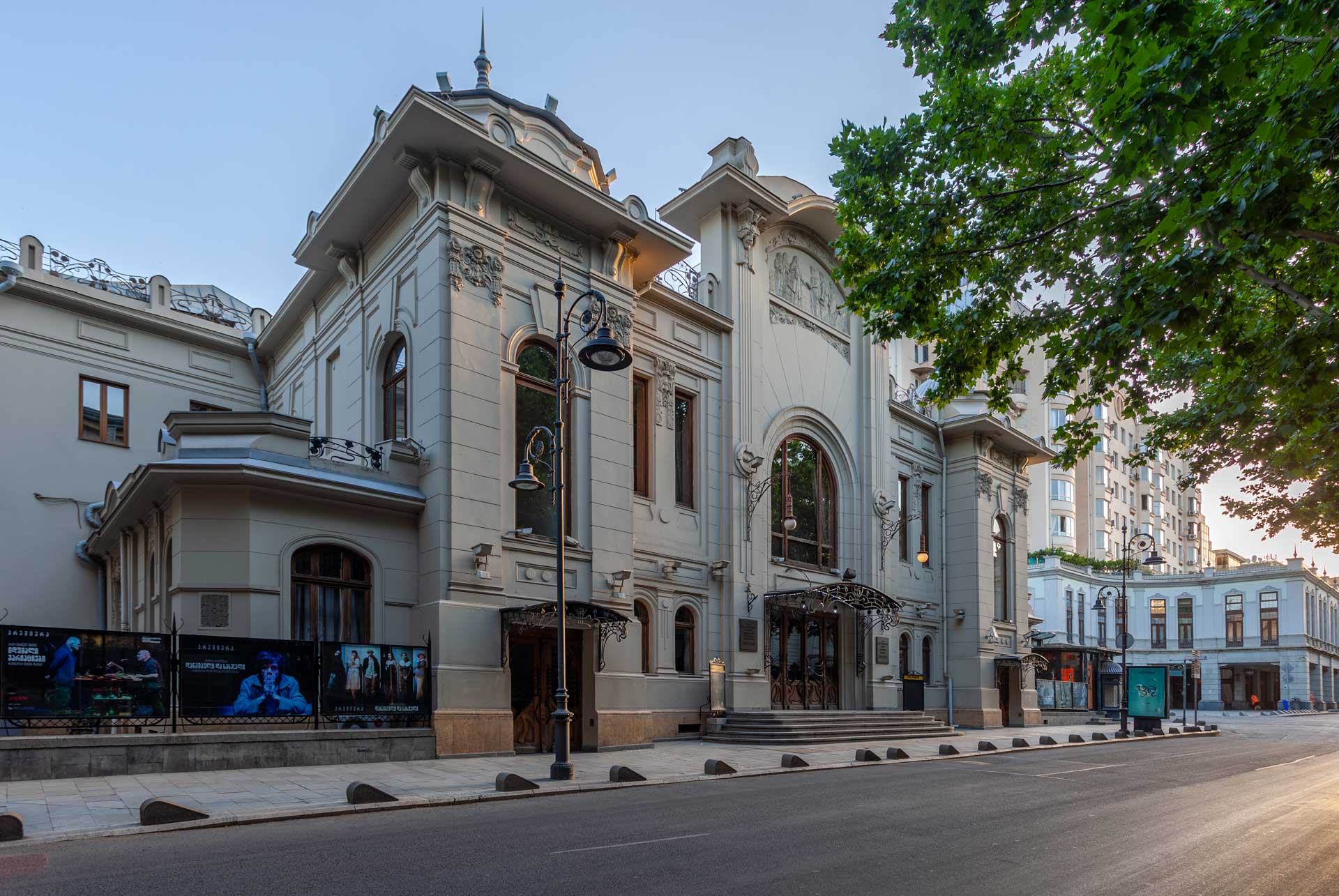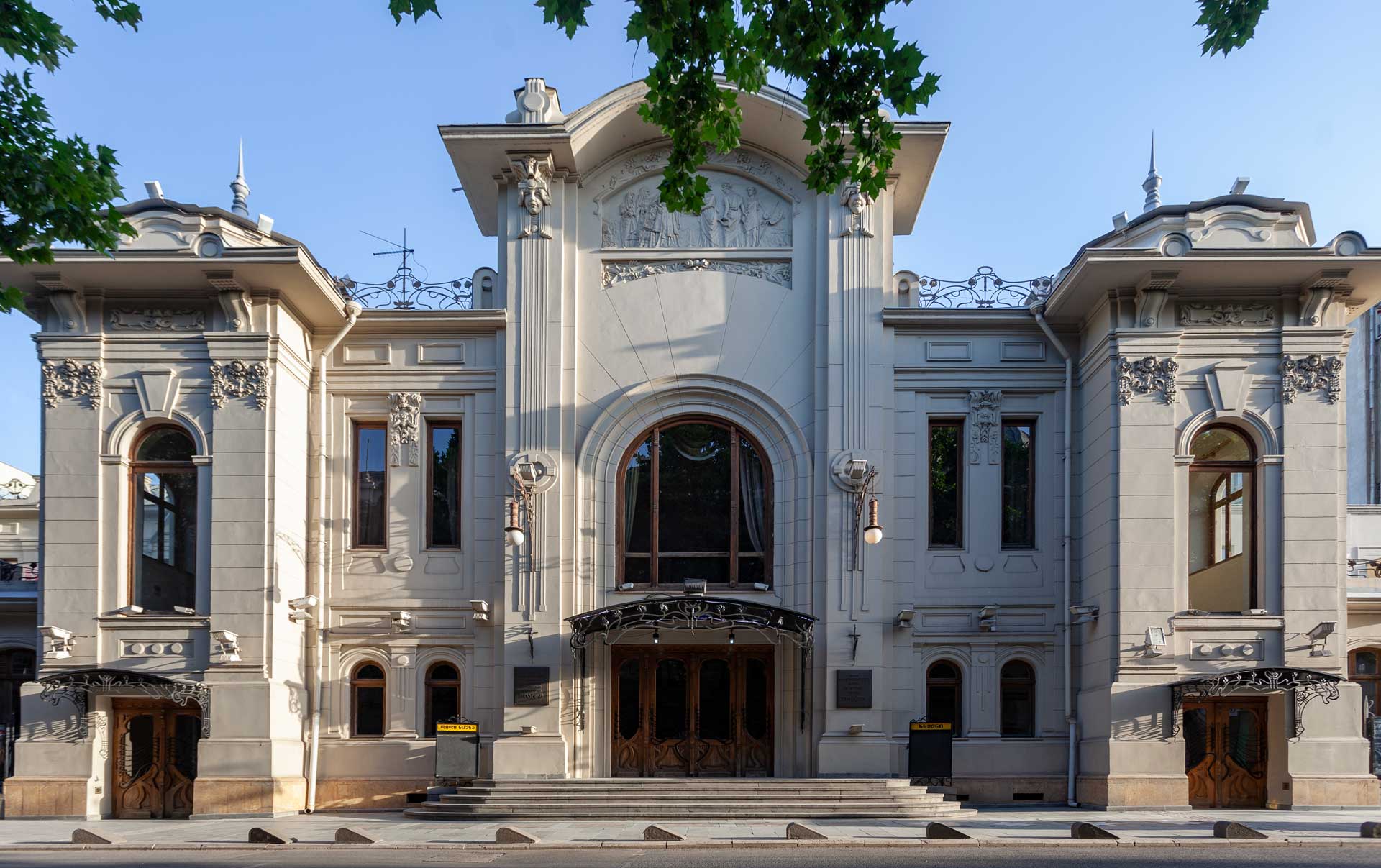
Feel free to add tags, names, dates or anything you are looking for


Building number eight on Marjanishvili Street in Tbilisi, which presently houses the Kote Marjanishvili State Academic Drama Theatre, was constructed between 1902 and 1907 according to the design of architect Stefan Kryczyński, and under the supervision of architect Aleksander Rogojski.

Marjanishvili Theatre (former People’s House)
Initially the building was intended to serve as the People’s House - a leisure and cultural centre for the lower classes. The idea of establishing the People’s House in Tbilisi was that of wealthy Georgian entrepreneur and philanthropist, Konstantine Zubalashvili. Zubalashvili’s death in 1901 prevented him from fulfilling his project; nevertheless construction of the house was supported by his four sons, who named it after their father.
.jpg)
The People’s House in 1910
The purpose of the People’s House was to provide a well-equipped stage for amateur theatre troupes, and other cultural and educational facilities. It contained a performance hall that could seat 600 spectators, an auditorium, and a library. Within a few years after its foundation, eleven amateur theatre groups were working there.

Central projection of the main facade
The architecture of the People’s House is one of the finest examples of Art Nouveau style in Tbilisi. Its main façade, which faces onto Marjanishvili Street, features three projections. The central one contains the main entrance and a large arched window above it. The whole facade is richly decorated with floral ornaments and figurative sculptures. Pilasters flanking the central projection are topped with capitals in the form of a woman’s head.
.jpg)
Capital in the form of a woman’s head
The key element of the decoration is a large stucco relief located in the upper part of the main facade. It serves to emphasize the cultural and social mission of the Peoples’ House. The three women depicted to the right, with their clothing and hairstyles crafted in ancient Greek fashion, personify three spheres of European culture: painting, music and literature. Opposite them are portrayed three more figures that symbolize Georgia, which is indicated not only by their attire, but also by a half-toppled column embellished with ornaments from Medieval Georgian churches. In addition, they represent three generations and the three main social classes of Georgia at that time. The book that the figure personifying literature is giving to the Georgian woman is key to the conceptual interpretation. The idea of this sculptural scene manifests the aspirations that were guiding Georgian society in the early twentieth century: Georgia must unite with European culture, but it also has to offer Europe its centuries-old national culture, which a new generation of educated Georgians will safeguard and develop.
.jpg)
Sculptural scene in the upper part of the main facade
After the Soviet occupation of Georgia, the People's House was closed. In 1930, the building was transferred to the theatre that had been established two years earlier in Kutaisi by Kote Marjanishvili. In 1933, the theatre was named after its founder. The performance hall was reconstructed several times during the Soviet period. From 2003 to 2006, the interior of the building underwent complete renovation and refurbishment.